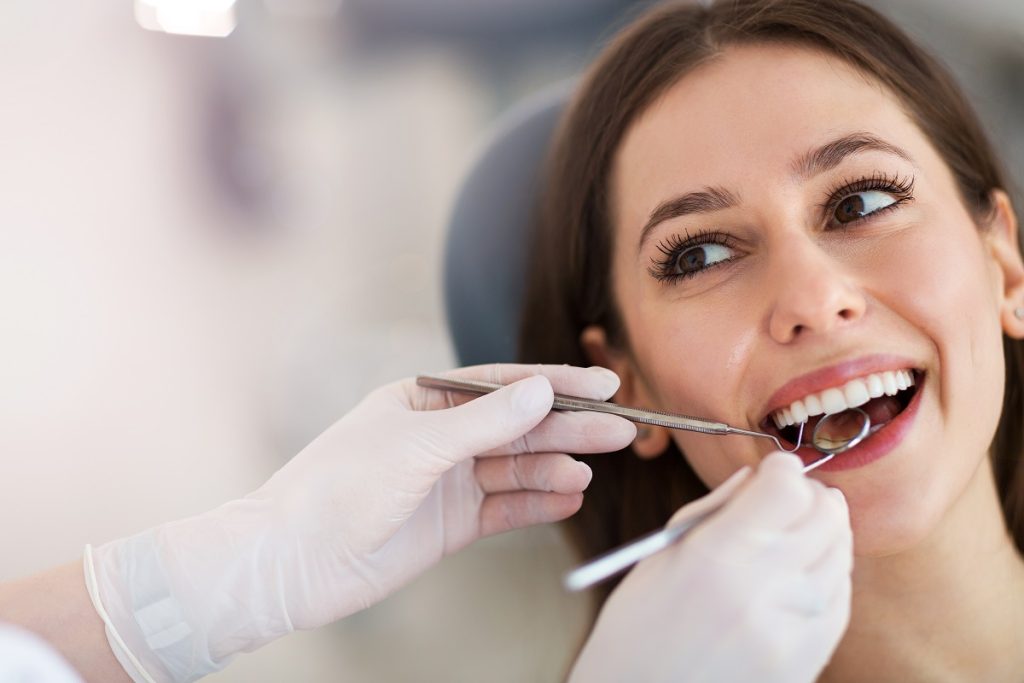- Underbites occur when the lower jaw protrudes beyond the upper jaw, causing misaligned teeth.
- Underbite causes include genetics, prolonged pacifier/thumb-sucking use, breathing through the mouth, and jaw trauma.
- Treatment options for an underbite are Invisalign Clear Aligners, orthognathic surgery, non-surgical options, and traditional braces.
- Prevention measures for an underbite include proper oral hygiene, avoiding prolonged pacifier/thumb-sucking use, and scheduling regular dental checkups.
Many dental problems are caused by genetics or developmental disorders, and underbites are no exception. The condition having an underbite refers to the protrusion of the lower jaw beyond the upper jaw, which results in misaligned teeth.
Besides causing a cosmetic concern, an underbite can lead to issues with speech, chewing, and TMJ, or temporomandibular joint disorder. This blog post aims to inform you about the causes, risk factors, and treatments available for underbites.
Causes
While some cases may be genetic, several environmental factors can contribute to an underbite. One such cause is prolonged thumb-sucking or pacifier use, which can alter the position of the teeth and jaw. Jaw size and growth can also be impacted by breathing through the mouth due to allergies or nasal congestion.
Additionally, injuries or trauma to the jaw can result in an underbite. While underbites may be challenging to prevent, early diagnosis and intervention can significantly improve the chances of successful treatment.
Risk Factors

Certain factors increase the likelihood of developing an underbite. These risk factors include genetics, as mentioned earlier, as well as prolonged pacifier use, prolonged bottle feeding, and thumb-sucking.
Additionally, suppose the permanent teeth are impacted or fail to descend into their proper positions. In that case, this can cause the lower jaw to grow much faster than the upper jaw, resulting in an underbite.
Treatments
Various treatments are available for an underbite, depending on the severity of the condition. Each treatment plan should be tailored to the individual’s needs, so it is essential to consult a trained orthodontist.
Invisalign Clear Aligners
One of the most popular treatment options for underbite is the Invisalign clear aligner. This treatment involves using custom-made, clear aligners to slowly move your teeth into their proper positions.
Unlike traditional braces, they are practically invisible and are generally more comfortable with less irritation. Your orthodontist will give you specific instructions for how long you’ll need to wear your aligners daily, and they’ll give you new sets of aligners every few weeks. Invisalign offers a discreet, comfortable, and effective way to treat underbites.
Surgery
Surgery may be necessary to correct the problem for more severe underbite cases. Orthognathic surgery is when the jawbone is surgically adjusted to correct the bite. During this procedure, the surgeon makes incisions in the jawbone to adapt its shape, and plates and screws are used to hold the new position. This procedure is recommended for patients with significant jaw discrepancies, TMJ disorders, sleep apnea, or difficulty speaking and chewing.
Non-Surgical Options
Invisalign and surgery are two of the most common treatment options for underbites, but non-surgical options are also available. For children, orthodontic techniques can help guide the growth and development of the jaw to address an underbite before it becomes more severe.
Functional appliances such as a chin cap or reverse-pull headgear can also be used. These options are usually less invasive than braces and can help guide jaw growth and prevent the problem from worsening.
Braces

Traditional braces are an option to treat underbites but are generally not recommended since there’s a risk they might make the underbite worse. Braces work by applying pressure to teeth, which may cause teeth to move in the direction of the force, making the underbite more pronounced. However, non-traditional braces – like upper braces combined with a wire that holds the lower teeth back – can sometimes be effective.
Prevention
Preventing an underbite starts with proper oral hygiene. An individual must practice brushing their teeth twice a day and flossing regularly. Additionally, avoiding prolonged bottle-feeding, pacifier use, thumb-sucking, and tongue-thrusting can minimize the risk of an underbite. Regular dental checkups can also help detect issues early enough for effective treatment.
The Bottom Line
Underbites can be a challenging dental issue to manage, but they can be prevented and treated with proper care. It is crucial to understand the causes, risk factors, and available treatments for underbites. Awareness of preventive measures such as good oral hygiene and avoiding habits like thumb-sucking, prolonged pacifier use, and tongue-thrusting can also minimize the risk of developing an underbite. Scheduling regular dental checkups can also help detect early warning signs, making it easier to address issues before they escalate.






